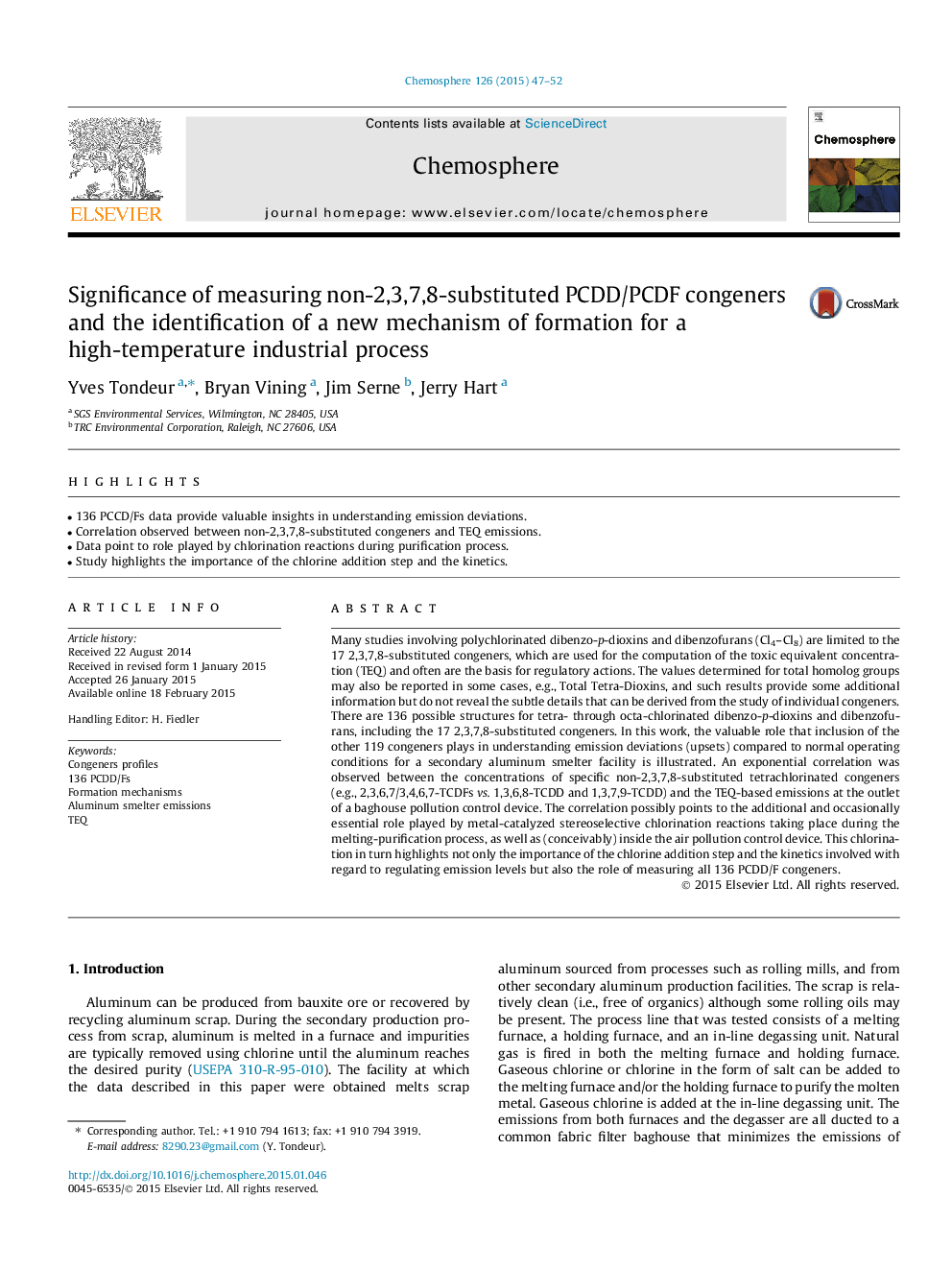| Article ID | Journal | Published Year | Pages | File Type |
|---|---|---|---|---|
| 4408416 | Chemosphere | 2015 | 6 Pages |
•136 PCCD/Fs data provide valuable insights in understanding emission deviations.•Correlation observed between non-2,3,7,8-substituted congeners and TEQ emissions.•Data point to role played by chlorination reactions during purification process.•Study highlights the importance of the chlorine addition step and the kinetics.
Many studies involving polychlorinated dibenzo-p-dioxins and dibenzofurans (Cl4–Cl8) are limited to the 17 2,3,7,8-substituted congeners, which are used for the computation of the toxic equivalent concentration (TEQ) and often are the basis for regulatory actions. The values determined for total homolog groups may also be reported in some cases, e.g., Total Tetra-Dioxins, and such results provide some additional information but do not reveal the subtle details that can be derived from the study of individual congeners. There are 136 possible structures for tetra- through octa-chlorinated dibenzo-p-dioxins and dibenzofurans, including the 17 2,3,7,8-substituted congeners. In this work, the valuable role that inclusion of the other 119 congeners plays in understanding emission deviations (upsets) compared to normal operating conditions for a secondary aluminum smelter facility is illustrated. An exponential correlation was observed between the concentrations of specific non-2,3,7,8-substituted tetrachlorinated congeners (e.g., 2,3,6,7/3,4,6,7-TCDFs vs. 1,3,6,8-TCDD and 1,3,7,9-TCDD) and the TEQ-based emissions at the outlet of a baghouse pollution control device. The correlation possibly points to the additional and occasionally essential role played by metal-catalyzed stereoselective chlorination reactions taking place during the melting-purification process, as well as (conceivably) inside the air pollution control device. This chlorination in turn highlights not only the importance of the chlorine addition step and the kinetics involved with regard to regulating emission levels but also the role of measuring all 136 PCDD/F congeners.
